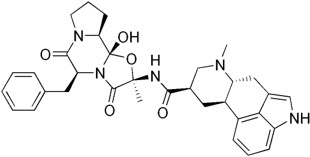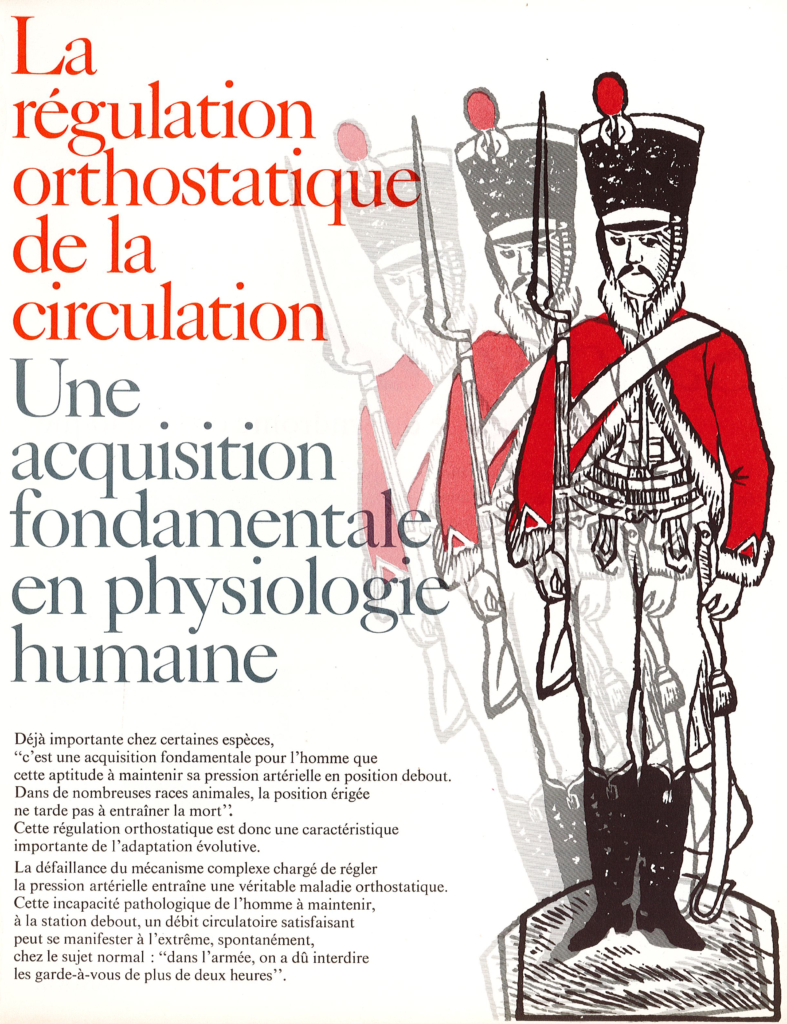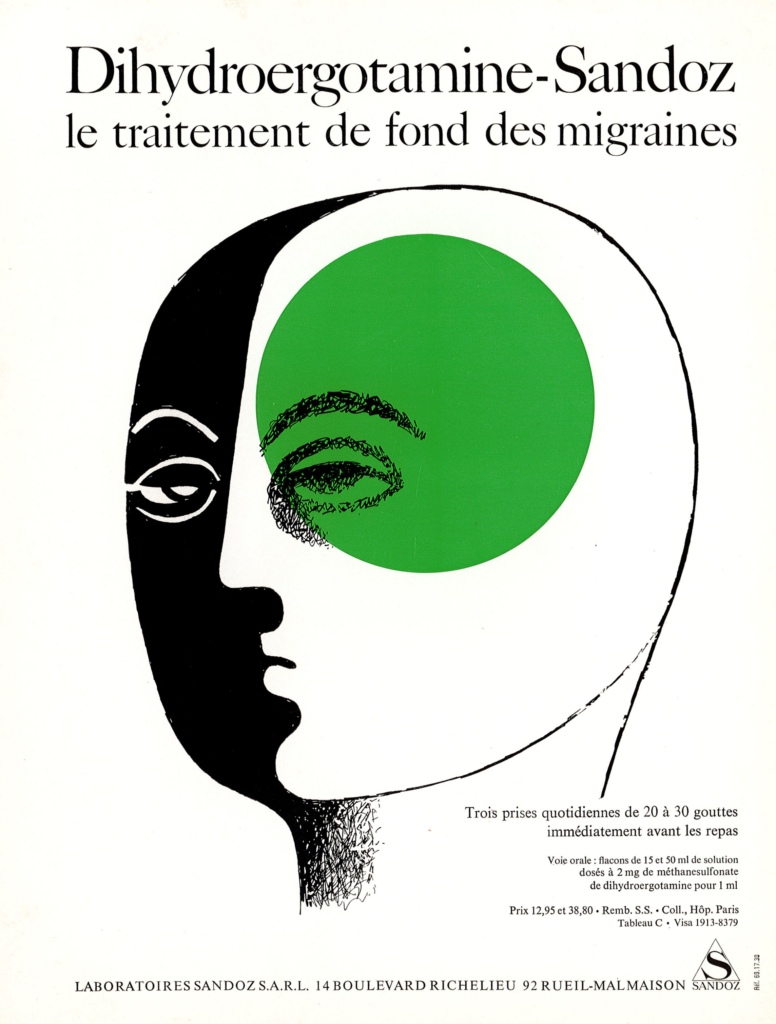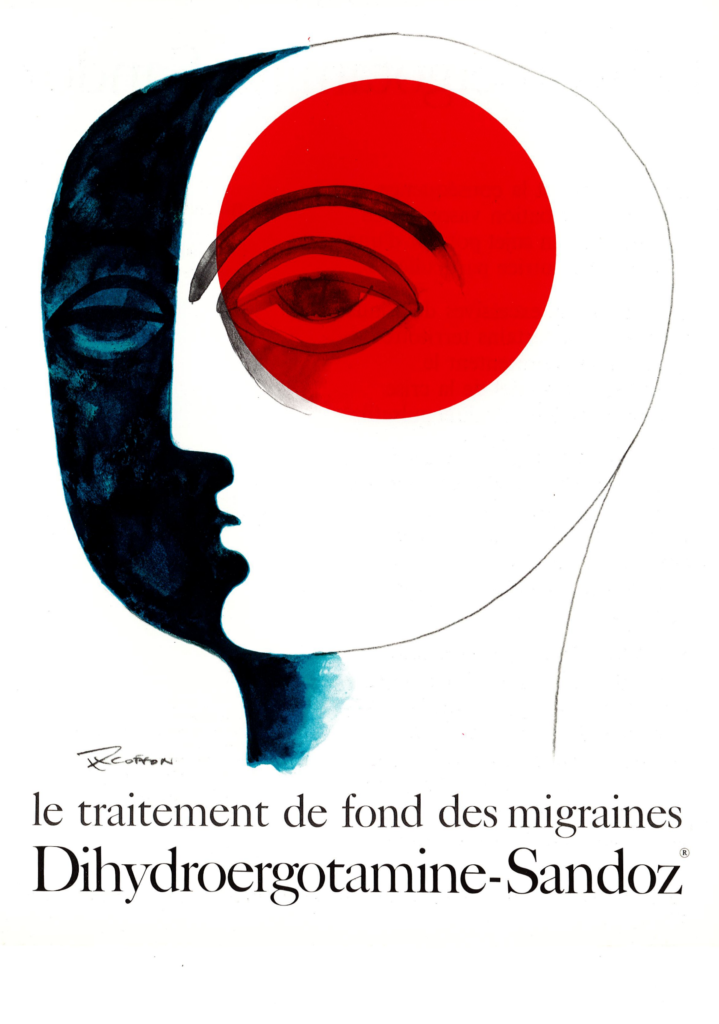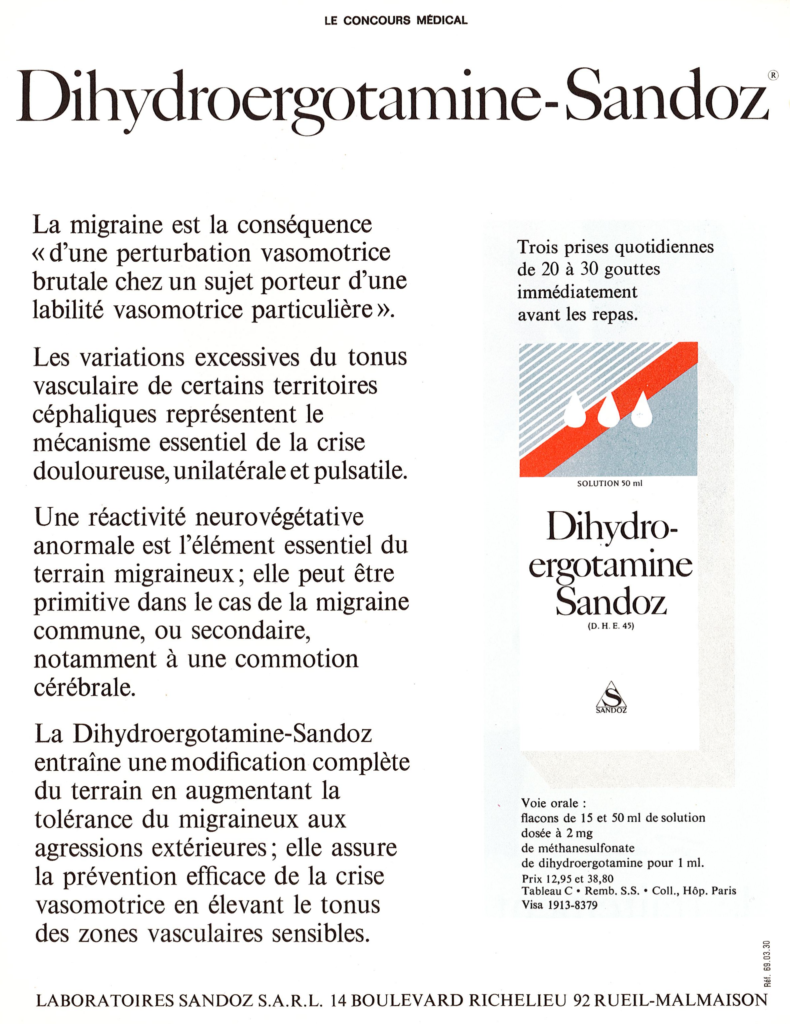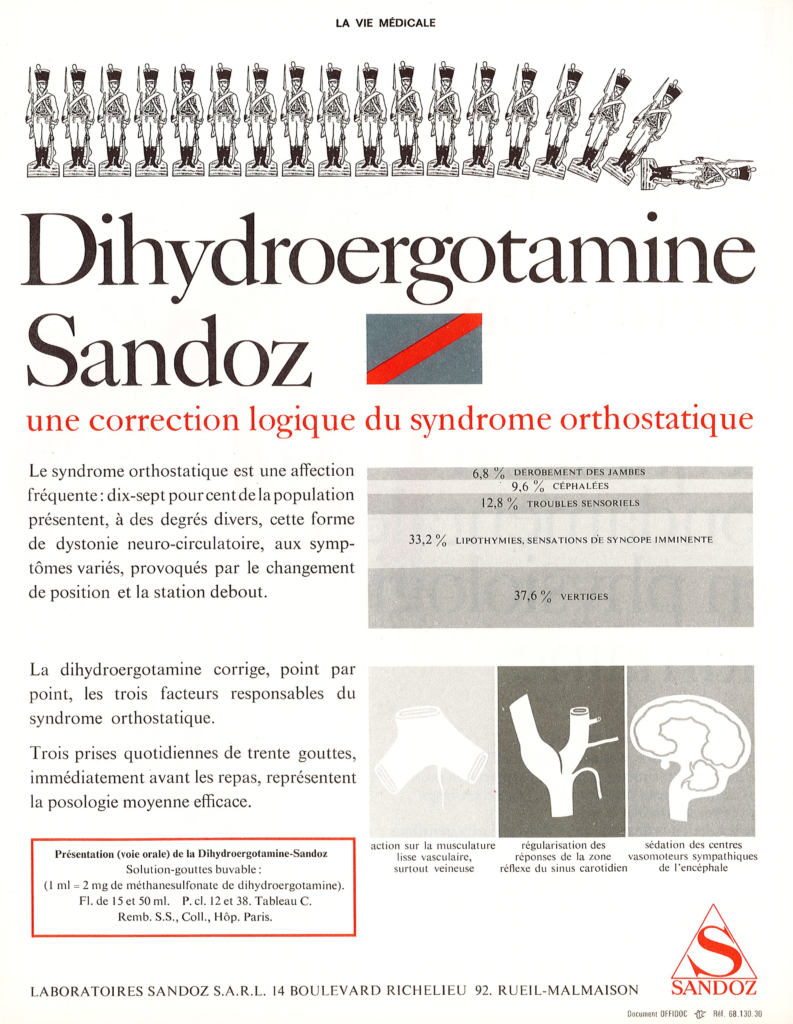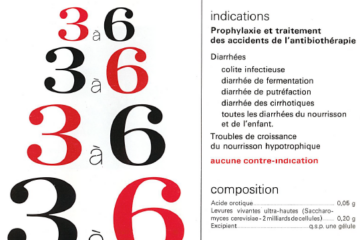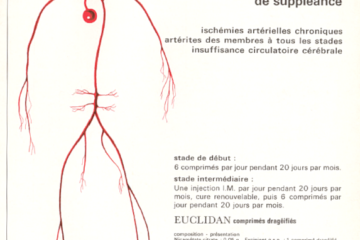Dihydroergotamine®, known as DHE, is a derivative of the ergot alkaloid ergotamine and an old drug used to combat migraine. The use of parenteral DHE (intravenous administration) to treat migraine was already mentioned in 1945 and the drug remains in use today, even if new treatments have been developed. DHE can be delivered by several routes: intravenous, intramuscular, subcutaneous, intranasal. The compound is interesting because it contributes both to reduce inflammation which is a component of migraine, and to modulate pain and mood. DHE is primarily a serotonin 5HT1B and 5HT1D receptor agonist. On the negative side, DHE may induce vasoconstriction, an effect which can be an issue in patients with cardiovascular risk factors.
DHE remains used today, although there are other anti-migraine oral drugs available, more convenient to use compared to iv DHE. Notably, the drug remains used in patients with migraine attacks not responsive to triptans. It is interesting to note also that an investigational drug device (INP104) that delivers DHE mesylate to the upper nasal space has been developed very recently. A dihydroergotamine mesylate nasal spray (Trudhesa™) has received approval by the Food and Drug Administration (FDA) in the US for the acute treatment of migraine in adults, in September 2021.
DHE for the treatment of migraine. The human head with a read/green big spot evokes the migraine. Note the two sides, black and white, of the face. DHE is also useful to regulate the orthostatic circulation. This effect is illustrated here with a soldier in army, often largely concerned with the standing position.
